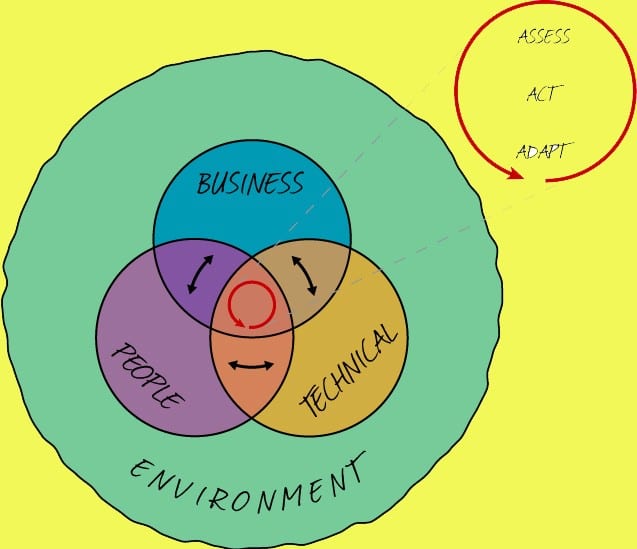In order to design and develop organizations that are effective in both human and economic terms, the following must occur:
- Treat organizations as systems (the relationship between the parts is as important as the parts themselves)
- The environment, people, technical and business sub-systems need to fit together so they complement, not compete, with each other
- This fit must be the key consideration guiding organizational and technological decisions
- Organizational effectiveness is achieved by joint optimization, not by maximizing the performance of one part at the expense of the others
- Quality of working life is an explicit design criterion
With the principles above, the following 3-Step change process is used to fully engage staff —
A. ASSESS
In a whole system scenario, assessing what the organizational requirements are within each of the sub-systems establishes baseline data and parameters to guide the alignment or change process.
B. ACT
The primary activity in the second step is to establish an Integration Team, which is responsible for:
- representing the needs of the organization (i.e., a diagonal slice of the hierarchy)
- engaging staff through continuously consulting with the larger organization and its stakeholders
- designing a change (continuous improvement) process, implementation and communication plan complete with budget that serves the mandate and parameters of the change initiative
- measuring the benefits and costs of the change
- communicating on an ongoing basis the progress, mid-course corrections and lessons learned
- developing strategies to celebrate the successes
C. ADAPT
Much of the organizational adaption necessary to internalize systemic alignment is accomplished in step 2 with the continuous consultation and involvement of staff throughout the change process. However, it is essential to establish continuous learning processes throughout the organization in order to fully integrate the change experience.
- Design feedback loops (keep an organization learning and adapting from its experience)
- Develop a commitment plan
- Work with those who support change
- Measure in the direction of desired change
- Make corrections quickly
- Use just-in-time training and coaching
- Walk the talk
Celebrate successes

